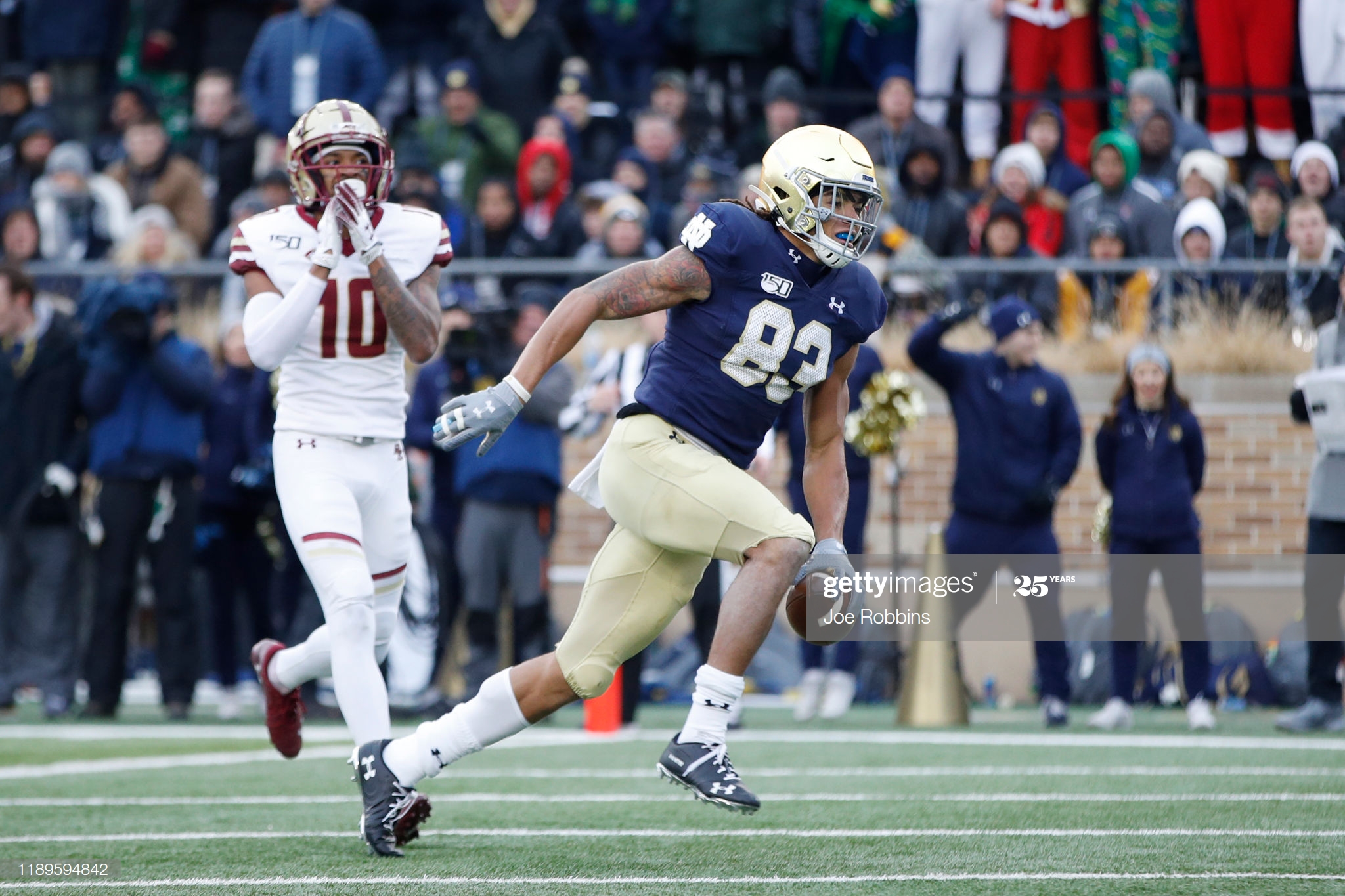Chase Claypool is a big boy. At 6’4”, the Notre Dame wide receiver has at times tipped the scales at upwards of 240 pounds. They have drafted tight ends who are smaller than is the 21-year-old. But make no mistake, he is a wide receiver, not a tight end, and he won’t let anybody tell him otherwise. The Pittsburgh Steelers, who drafted him in the second round yesterday, certainly are not disagreeing.
Speaking to Steelers Nation Radio earlier today, he told his hosts that he currently weighs 233 pounds. While not listed on the roster yet, the team’s website in an article lists his weight at 238 pounds. But that is not the weight at which he expected to play in 2020.
“We haven’t talked too much about that”, Claypool said about speaking to the team about where they would like him to play, but he had an idea. “I’ll probably go ahead and talk to Coach Tomlin in a couple days, but I would imagine maybe 228-230”, he said. “As long as I’m not losing any muscle mass, then I’m good with that”.
Claypool is pretty easily the biggest weight receiver the team has drafted for some time. While Martavis Bryant was also 6’4”, he came in with a listed weight of 211 pounds. Nobody ever asked him if he would be willing to convert to tight end at the pro level.
But the Canadian-born pass-catcher put most skeptical inquiries to be when he ran a 4.42 40-yard dash at the NFL Scouting Combine back in February. For comparison, Mike Wallace ran a 4.37 back in 2009. Bryant also ran a 4.42.
If Claypool can run at the same timed speed as Bryant, with an even bigger frame—Bryant did bulk up over the course of his career, and also eventually lowered his 40 time—then he can really be a headache for opposing defensive backs, who almost certainly won’t be able to outleap him, nor box him out.
Of course, that was never the issue for him at Notre Dame. The bigger concern some have had has been whether or not he can consistently create NFL-level separation, and if his timed speed really shows up in-game. Answers to those questions may be mixed based on his college tape.
One of the most underrated changes that players make going from the college level to the pros is the physical transformation that comes with being in a profession where your physical status is catered to by experts, both diet and exercise, to maximize your abilities.
The 230-pound ballpark sounds about right to me as an amateur, but time will tell to see what the Steelers’ strength and conditioning staff have to say about where they feel he should be. He’ll have plenty of time to work out on his own before he ever gets to Pittsburgh.








